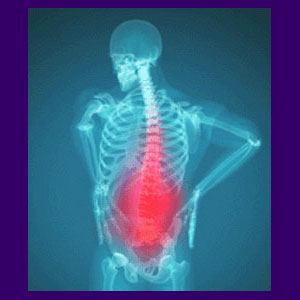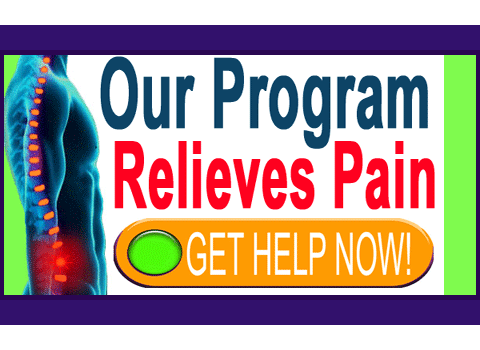
Scoliosis back pain is a rare, but possible consequence of severe and abnormal side-to-side spinal curvature conditions, although many dorsopathy symptoms are mistakenly blamed on lesser degrees of curvature.
Scoliosis is one of the most common spinal abnormalities and is typically asymptomatic in its mild and moderate forms. Advanced and extreme cases of scoliosis can cause back pain, neck pain and a variety of related neurological symptoms throughout the body, but these instances are rather rare. Unfortunately, when symptoms do occur, they may be very challenging to resolve, since scoliosis is a very difficult condition to successfully treat. Most therapies will do nothing to change the reason why pain exists and the surgical methods which can alter the spinal anatomy might make things worse for some hapless patients.
This treatise explores the occurrence of scoliosis-related dorsal symptomology.
Back Pain from Scoliosis
There is nothing inherently painful about mild to moderate scoliosis. In fact, many people have it and do not even know it. Most pain syndromes attributed to mild and moderate curvatures are misidentified as structural conditions, when all along the actual source of pain is typically ischemia or some other causative process.
In many cases, the scoliosis condition is to blame for the pain, but not because of any anatomical issue, but instead, because of the nocebo effect imparted during the diagnosis. This is why it is so crucial to handle the emotional aspects of scoliosis care very delicately, especially in children.
The worst cases of scoliosis can certainly create symptoms through purely structural means, including trapping nerve roots in the apex of a curvature, compressing nerve roots due to neuroforamen which no longer line up correctly, compressing internal organs and a variety of soft tissue conditions which may cause widespread back muscle pain and possible imbalances.
Scoliosis Spine Pain Concerns
Unless the curvature is indisputably documented to be compressing spinal nerves or the spinal cord, there is little chance that serious symptoms will result from scoliosis. The earlier a scoliosis condition develops in life, the greater the chance of it causing significant negative effects. Early curvatures can develop rapidly and truly become horrific issues during the growth spurts of adolescence. Luckily, these cases are the gross exceptions to the rule. Most scoliosis does not even require medical care, although it is wise to closely monitor all known existing curvatures just to be sure they are not worsening.
When care is determined to be necessary, bracing may be indicated for young patients who are still growing. When implemented early, a brace program might help prevent the curve from worsening to symptomatic degrees. In other cases, surgery might be needed, but unfortunately presents great risk for the patient, both in terms of health hazards and often poor curative results.
Scoliosis Back Pain Considerations
Any scoliosis specialist will hopefully handle their patients with honestly, compassion and an enlightened attitude based on fact, rather than medical myth and profit motivation. Patients who do require a scoliosis brace or surgery will receive it and hopefully recover well enough to live a full and unrestricted life. More importantly, those who do not need any care or special treatment will not receive any. This is vital for allowing a person to shrug off the diagnostic nocebo which is at the heart of most minor to moderate scoliosis pain syndromes.
I always advise that affected patients and their families do everything they can to learn about scoliosis and understand the real facts about side-to-side spinal curvature. This way, there is less chance of being fooled into believing that there is something seriously wrong with the spine, when all along the curvature is so mild as to create no pain whatsoever. Don’t reenact my mistakes. I bought into the idea that my scoliosis back pain resulted from an inconsequential curvature, until a honest doctor told me that this was never the case. I wish I met this one care provider much earlier in life, but better late than never.





